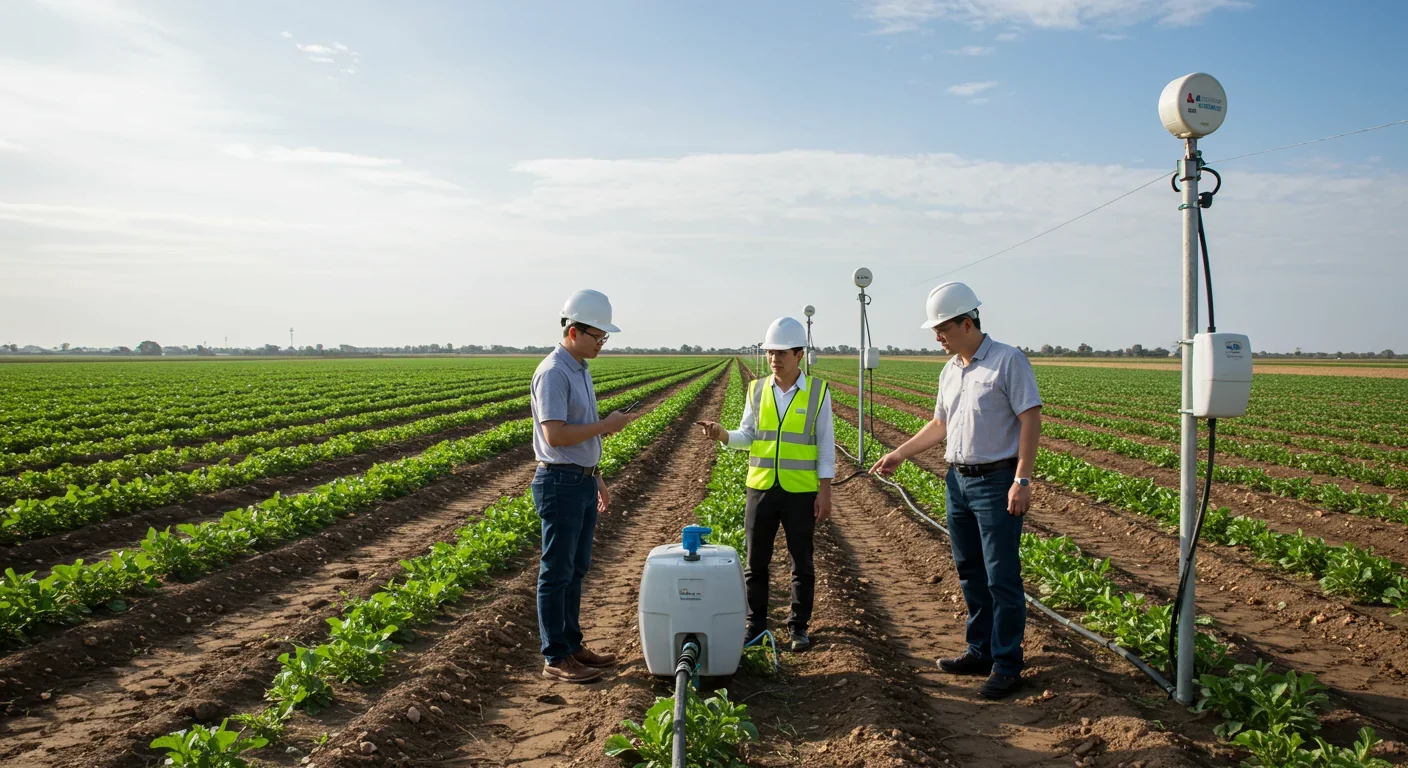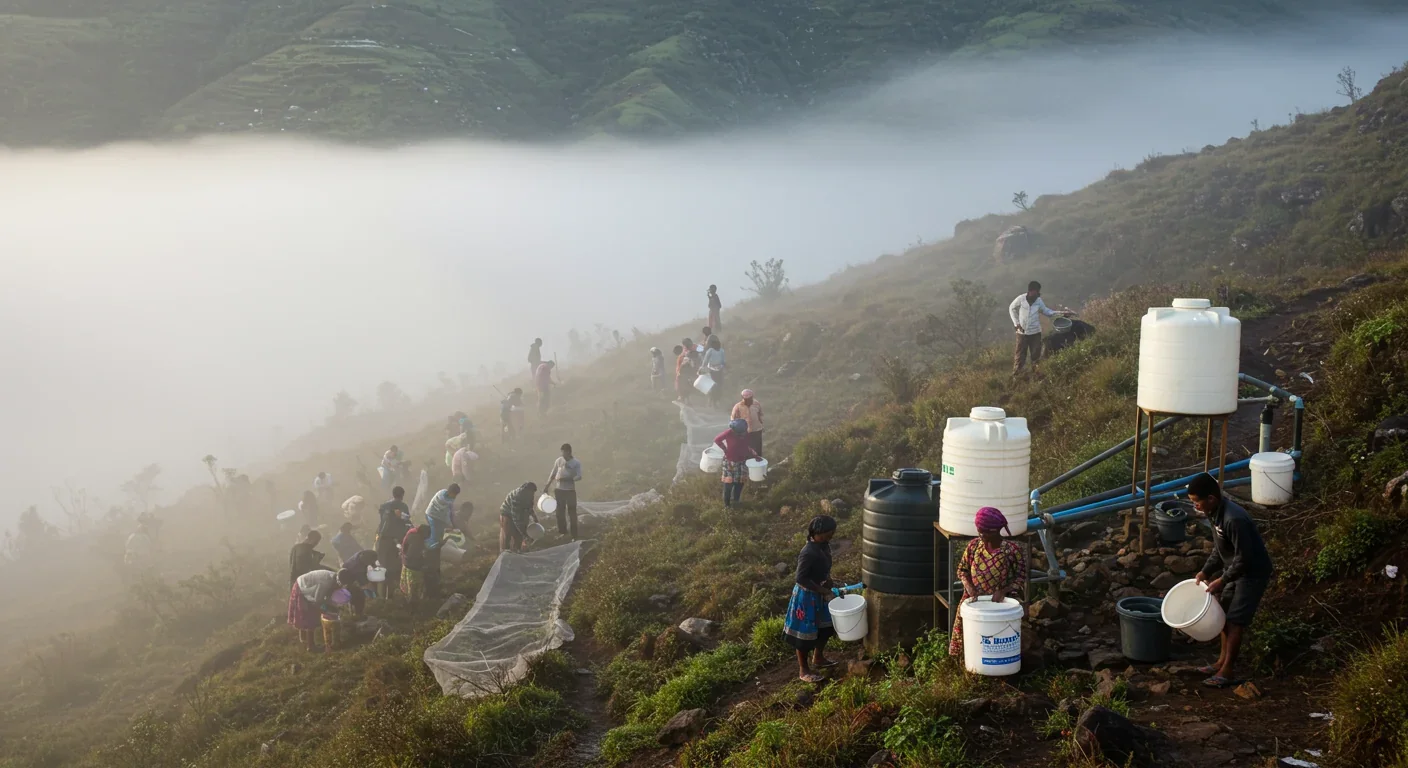Digital Pollution Tax: Can It Save Data Centers?

TL;DR: By 2030, over a third of drought-prone regions could face 'Day Zero'—when taps run completely dry. Climate change, population growth, and water mismanagement are accelerating this crisis, threatening 750 million people by 2100. Solutions exist through technology, policy reform, and individual action—but time is running out.

By 2030, over a third of the world's drought-prone regions could face "Day Zero"—the moment when you turn on your tap and nothing comes out. It's not science fiction. Cities from Cape Town to Chennai have already come within days of running completely dry. And according to a landmark study published in Nature Communications, this crisis isn't looming somewhere in the distant future. It's happening right now, accelerating faster than most experts predicted, and it's poised to reshape how billions of people live, work, and survive.
Welcome to the edge of the water crisis, where Earth's most precious resource is vanishing before our eyes.
Imagine waking up one morning to find your faucet won't work. Not because of a pipe break or scheduled maintenance, but because there's simply no water left in the system. Your city's reservoirs are empty. The rivers have slowed to trickles. Groundwater levels have plummeted beyond reach. This is "Day Zero"—and it's no longer hypothetical.
In 2017, Cape Town, South Africa, nearly reached this nightmare scenario after one of its most severe multi-year droughts on record. The city of four million people watched helplessly as reservoir levels dropped below 20%, then 15%, then 10%. Officials set a date: April 12, 2018, when municipal water would be shut off entirely. Residents would have to queue at communal taps for a daily ration of 25 liters—barely enough to flush a toilet twice.
Cape Town narrowly avoided catastrophe through extreme rationing and unexpected rainfall, but the trauma left scars. A year later, Chennai, India, faced a similar crisis when monsoon rains failed and reservoirs dried up. Water was trucked into neighborhoods as residents lined up for hours in baking heat, desperate for enough to drink and cook.
These weren't anomalies. They were warnings.
Recent research using advanced climate models reveals that Day Zero events will become increasingly common. The study found that nearly three-quarters of drought-prone regions face severe water scarcity by century's end if current emission trends continue. More alarmingly, 35% of these regions could experience Day Zero conditions within the next 15 years—including parts of North America, the Mediterranean, southern Africa, and Asia.
By 2100, 750 million people could face these conditions, with two-thirds living in cities where infrastructure simply cannot keep pace with climate-driven water stress.
Water scarcity isn't caused by a single villain. It's the collision of multiple accelerating trends, each feeding into the others like a vicious cycle.
Climate change sits at the center. As global temperatures rise, precipitation patterns shift dramatically. Some regions experience devastating floods while others suffer prolonged droughts. Research from Brazil shows that climate change could drastically reduce aquifer recharge, cutting off the underground reserves that billions depend on during dry seasons. Warming temperatures also increase evaporation rates, meaning less rainfall actually reaches reservoirs and rivers.
But climate isn't acting alone. Population growth compounds the pressure. Cape Town and Gauteng are projected to face looming water crises due to rapid urbanization, with millions moving to cities already struggling to meet current demand. When more people need water in places where supplies are shrinking, something has to give.
Then there's industrial consumption. One particularly concerning trend: the proliferation of water-guzzling semiconductor manufacturing and data centers in already water-stressed areas like Texas and Arizona. A single chip fabrication plant can use millions of gallons daily—the equivalent of a small city's water needs. As our digital economy expands, so does this hidden water footprint.

Agricultural practices add another layer of complexity. Farming accounts for roughly 70% of global freshwater use, yet much of this is wasted through inefficient irrigation systems. The paradox of irrigation efficiency reveals that even when farmers improve their water use, increased production often leads to greater overall consumption. Meanwhile, negative effects of intensive agriculture include chemical runoff that pollutes remaining water sources, making them unsafe for human use.
Finally, there's mismanagement and infrastructure decay. Experts estimate that huge amounts of treated water are lost through leaky pipes and aging distribution systems. In some cities, losses exceed 50% before water even reaches consumers. It's like trying to fill a bathtub with the drain open.
Water scarcity doesn't affect everyone equally. It follows the fault lines of existing inequalities, hitting hardest where people are already vulnerable.
According to the World Health Organization, 2 billion people lack access to safely managed drinking water, and this number is growing. The consequences ripple through every aspect of life.
Health impacts are immediate and devastating. Waterborne diseases thrive when people lack clean drinking water and adequate sanitation. Cholera, dysentery, and typhoid—diseases that wealthy nations largely eradicated decades ago—remain deadly threats in water-stressed regions. Children are particularly vulnerable, with contaminated water contributing to malnutrition and stunted development.
Food security hangs in the balance. When farmers can't irrigate crops, harvests fail. When harvests fail, food prices spike, pushing millions toward hunger. The Ganges River, which feeds hundreds of millions in South Asia, is drying faster than ever, threatening agricultural production across multiple countries. Pakistan faces a paradox of floods alternating with severe water shortages, making long-term planning nearly impossible for farmers.
Economic stability crumbles when water disappears. Industries shut down. Property values collapse. Tourism evaporates. Cape Town's near-miss Day Zero crisis cost the city an estimated $400 million in economic losses, even though the taps never actually ran dry. A full Day Zero event would be catastrophically worse.
Conflict and migration follow water scarcity like shadows. Disputes over water rights intensify, sometimes erupting into violence. The Indus Waters Treaty between India and Pakistan has shifted from cooperative vision to confrontation as both nations face increasing water stress. When local water sources fail entirely, people have no choice but to leave, creating climate refugees who strain resources in their destinations.
Low-income communities bear the heaviest burden. The UN's special focus on inequalities in water access reveals that progress in expanding access has been deeply uneven. While wealthy neighborhoods enjoy unlimited water, poor communities in the same cities may receive water only a few hours per week—or not at all.
Desperation breeds innovation. As the water crisis intensifies, communities, governments, and researchers are developing remarkable solutions.
Technological breakthroughs are changing what's possible. Desalination, once prohibitively expensive, has become increasingly viable. Israel's experience shows what's possible—the country now derives much of its water supply from converting seawater, helping Cape Town explore similar approaches. Advanced water recycling systems can now purify wastewater to drinking standards, turning sewage into a resource rather than a problem.
Smart water management systems use sensors and AI to detect leaks in real time, preventing massive losses. Precision agriculture technologies help farmers grow more food with less water, using drip irrigation and soil moisture sensors to deliver water only where and when it's needed.

Policy innovations matter just as much as technology. Cape Town's response to its crisis included issuing a municipal green bond worth 1 billion ZAR to finance critical water infrastructure upgrades. The bond's 10-year term transcends election cycles, ensuring continuous investment regardless of political changes. This model demonstrates how patient capital can fund long-term water security.
Water pricing reforms, though politically controversial, can dramatically reduce waste. When Cape Town implemented strict limits and escalating prices during its crisis, consumption dropped by more than half. The key is designing systems that ensure essential water remains affordable for poor households while discouraging wasteful use by those who can afford to pay more.
Community-level initiatives prove that local action matters. In India, traditional water harvesting techniques are being revived—simple systems that capture rainwater and recharge groundwater. In drought-prone regions of Africa, communities are planting trees to restore watersheds and slow evaporation. These low-tech solutions often work better than expensive infrastructure in rural areas.
Nature-based solutions offer unexpected promise. Wetlands restoration can increase water storage while filtering pollutants. Forest conservation protects watersheds that feed rivers and aquifers. Green roofs and permeable pavements in cities help rainfall seep into the ground rather than running off into drains.
The scale of the water crisis can feel paralyzing, but individual and collective action matters more than you might think.
At home, the math is simple: every gallon saved is a gallon preserved. Low-flow fixtures, fixing leaks promptly, and shortening showers can cut household water use by 30-50%. Rethinking lawns—which consume enormous amounts of water for purely aesthetic purposes—in favor of native plants adapted to local rainfall can save thousands of gallons yearly. Collecting rainwater for garden use is legal in most places and reduces demand on municipal systems.
In your community, supporting water infrastructure investments through local bonds and taxes prevents crises before they start. Aging pipes don't fix themselves. Advocating for smart development policies that consider water availability before approving new construction projects helps communities avoid growing beyond their means.
Through your choices, recognizing water's hidden footprint changes consumption patterns. That steak on your plate required thousands of gallons of water to produce. Those cheap clothes were made using vast amounts of water—often in countries already facing scarcity. Your smartphone's manufacturing consumed significant water. None of this means giving up modern life, but it does mean choosing more consciously.
Via your voice, contacting elected officials about water policy can shift priorities. Water infrastructure isn't glamorous, but it's essential. Climate action isn't abstract—it's about preserving the water systems we depend on. International cooperation on shared water resources prevents conflicts that could destabilize entire regions.
By spreading awareness, conversations about water scarcity break the silence that allows inaction. Most people don't think about water until it's gone. Sharing information about the crisis, solutions being implemented, and actions others can take creates ripples that become waves.
Here's the paradox: we have enough water on Earth. The planet is 71% ocean. The problem isn't total quantity but distribution, timing, quality, and management. Solving the water crisis is technically possible—we know what needs to be done.
The question isn't can we fix this. It's will we.
Climate scientists warn that Day Zero events represent "not just a future concern in a warming world, but a near-term reality." The window for preventing widespread water catastrophes is narrowing, but it hasn't closed. Every degree of warming we prevent, every infrastructure improvement we make, every wasteful practice we eliminate, and every person who understands the stakes—these all matter.
The cities that survive and thrive in the coming decades will be those that treated water as the precious resource it is. They'll be the ones that invested in infrastructure, embraced innovation, changed wasteful habits, and recognized that water security isn't a luxury—it's the foundation of everything else.
When you turn on your tap tomorrow morning, water will probably flow. The question is whether the same will be true in 2030, 2040, or 2050—for you, your children, and the billions of others who share this increasingly thirsty planet.
The answer depends on what we do next.

Recent breakthroughs in fusion technology—including 351,000-gauss magnetic fields, AI-driven plasma diagnostics, and net energy gain at the National Ignition Facility—are transforming fusion propulsion from science fiction to engineering frontier. Scientists now have a realistic pathway to accelerate spacecraft to 10% of light speed, enabling a 43-year journey to Alpha Centauri. While challenges remain in miniaturization, neutron management, and sustained operation, the physics barriers have ...

Epigenetic clocks measure DNA methylation patterns to calculate biological age, which predicts disease risk up to 30 years before symptoms appear. Landmark studies show that accelerated epigenetic aging forecasts cardiovascular disease, diabetes, and neurodegeneration with remarkable accuracy. Lifestyle interventions—Mediterranean diet, structured exercise, quality sleep, stress management—can measurably reverse biological aging, reducing epigenetic age by 1-2 years within months. Commercial ...

Data centers consumed 415 terawatt-hours of electricity in 2024 and will nearly double that by 2030, driven by AI's insatiable energy appetite. Despite tech giants' renewable pledges, actual emissions are up to 662% higher than reported due to accounting loopholes. A digital pollution tax—similar to Europe's carbon border tariff—could finally force the industry to invest in efficiency technologies like liquid cooling, waste heat recovery, and time-matched renewable power, transforming volunta...

Humans are hardwired to see invisible agents—gods, ghosts, conspiracies—thanks to the Hyperactive Agency Detection Device (HADD), an evolutionary survival mechanism that favored false alarms over fatal misses. This cognitive bias, rooted in brain regions like the temporoparietal junction and medial prefrontal cortex, generates religious beliefs, animistic worldviews, and conspiracy theories across all cultures. Understanding HADD doesn't eliminate belief, but it helps us recognize when our pa...

The bombardier beetle has perfected a chemical defense system that human engineers are still trying to replicate: a two-chamber micro-combustion engine that mixes hydroquinone and hydrogen peroxide to create explosive 100°C sprays at up to 500 pulses per second, aimed with 270-degree precision. This tiny insect's biochemical marvel is inspiring revolutionary technologies in aerospace propulsion, pharmaceutical delivery, and fire suppression. By 2030, beetle-inspired systems could position sat...

The U.S. faces a catastrophic care worker shortage driven by poverty-level wages, overwhelming burnout, and systemic undervaluation. With 99% of nursing homes hiring and 9.7 million openings projected by 2034, the crisis threatens patient safety, family stability, and economic productivity. Evidence-based solutions—wage reforms, streamlined training, technology integration, and policy enforcement—exist and work, but require sustained political will and cultural recognition that caregiving is ...

Every major AI model was trained on copyrighted text scraped without permission, triggering billion-dollar lawsuits and forcing a reckoning between innovation and creator rights. The future depends on finding balance between transformative AI development and fair compensation for the people whose work fuels it.